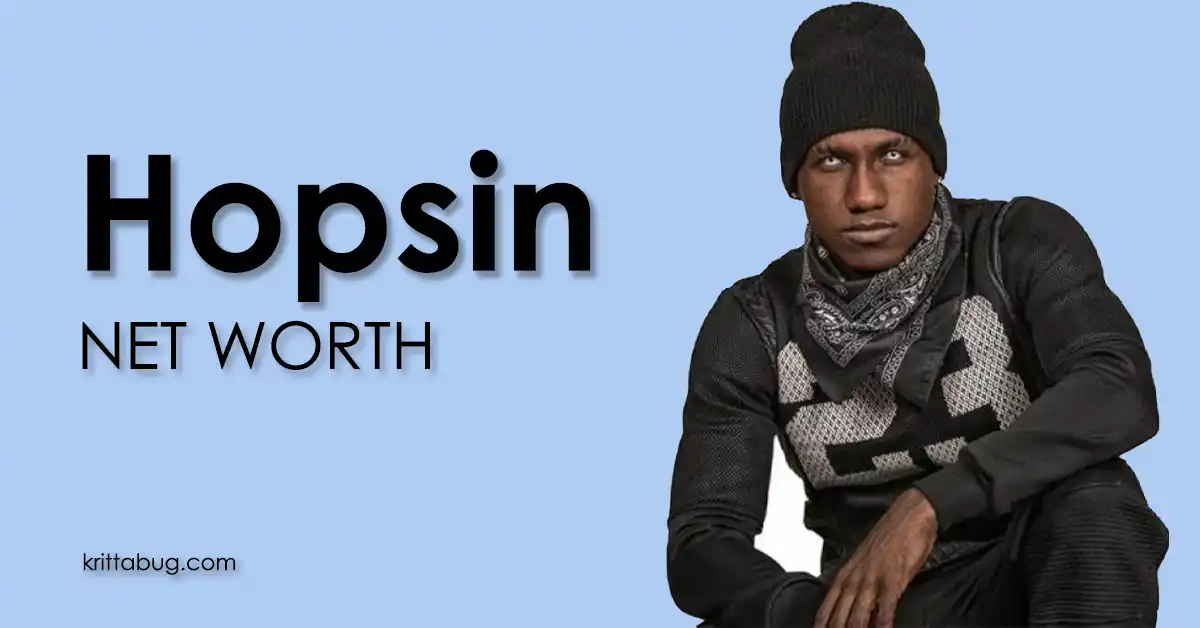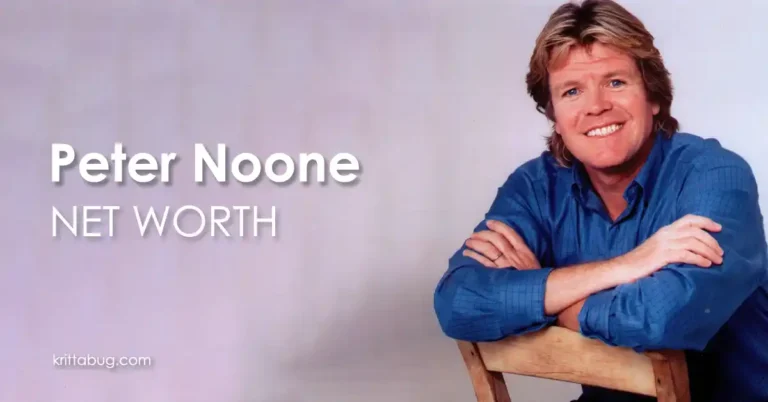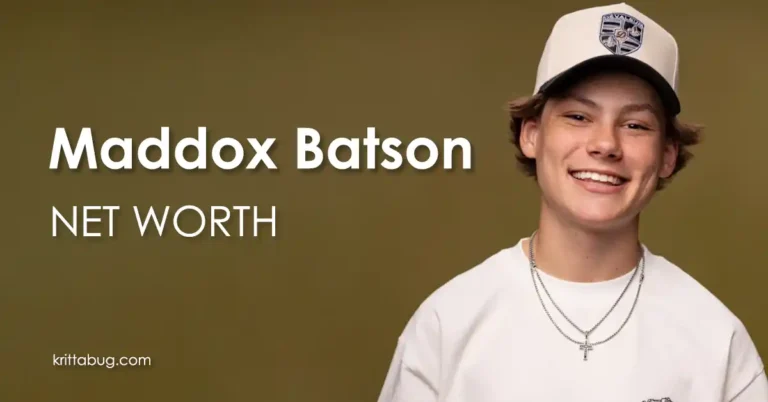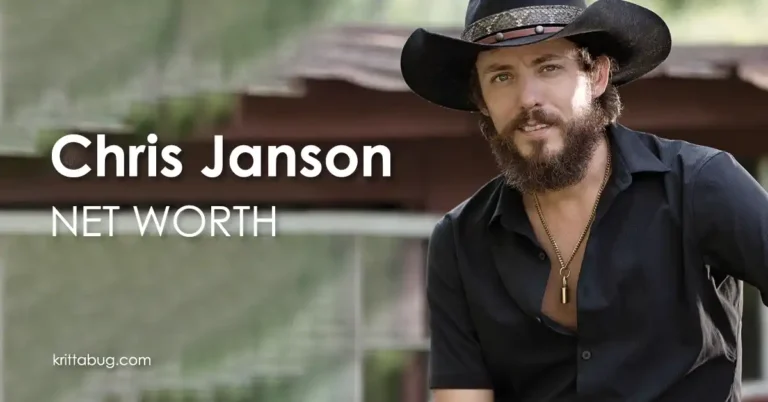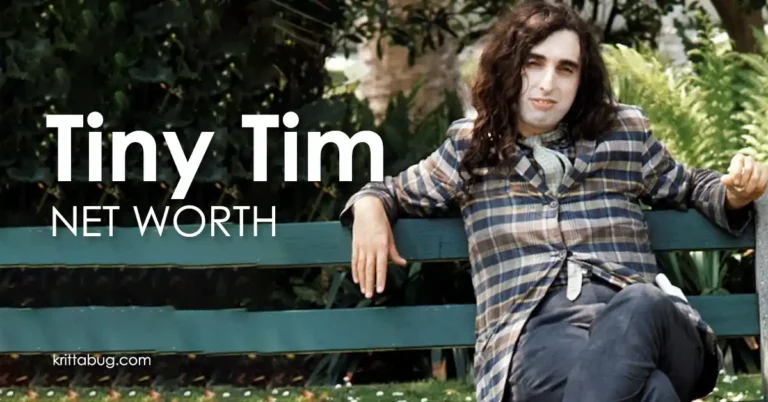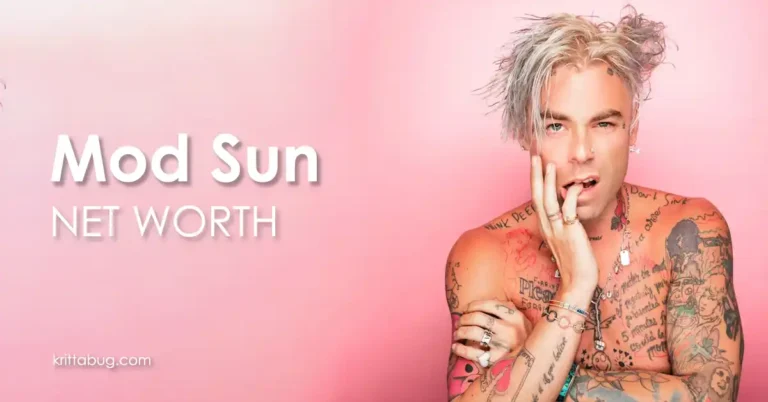Hopsin Net Worth: $4 million (modeled estimate).
Curious about Hopsin net worth, his income streams, and the story behind the white-eye-contacts icon?
This quick, data-aware guide breaks down the dollars, the discography, and the decisions that shaped a resilient independent career.
By the end, you’ll know how touring, streaming, YouTube, and brand-ready entrepreneurship compound over time—and what that means for Hopsin net worth in 2025.
Skim the bio for essentials, scan the year-by-year earnings table, then use our FAQs to get straight answers to what fans actually ask. We keep it simple, sourced, and forward-looking so you can separate hype from hard numbers. Want context on Funk Volume, Undercover Prodigy, and chart peaks?
You’ll find those below along with realistic estimates, not clickbait. Prefer learning takeaways? Jump to lessons and quotes to see how consistency, craft, and community build leverage for indie rappers.
Whether you’re a fan, creator, or researcher, this page gives you a clean snapshot—what he’s known for, how he earns, and the factors that move net worth up or down.
Who Is Hopsin?
Hopsin is an American rapper, producer, and director from Los Angeles whose DIY discipline shaped a distinctly independent path. Known for theatrical white contacts and razor-edged storytelling, he grew an audience through the viral “Ill Mind” series and relentless YouTube consistency.
After early label turbulence, he co-founded Funk Volume, then launched Undercover Prodigy to control releases, marketing, and margins. That business-first pivot keeps creative rights closer to the artist, which matters when your catalog continues to stream for years.
Fans value the honesty—songs unpack addiction, ambition, and industry politics—while the beats stay punchy enough for gym playlists and TikTok edits. From Raw to Knock Madness, Pound Syndrome, and No Shame, the body of work maps a decade of experiments with sound and subject.
Today, Hopsin focuses on singles, collaborations, and platform diversification, a modern tact for creators balancing art with revenue stability. If you’re new, start with “Ill Mind 5,” “Hop Is Back,” and “Sag My Pants,” then explore deep cuts for the full arc.
Hopsin net worth Net Worth in 2025
Let’s keep expectations real: exact celebrity wealth is private, so figures are modeled from public signals. Multiple trackers peg Hopsin net worth near the mid-single-millions, aligning with catalog longevity, touring cycles, and YouTube royalties.
To make this useful, we aggregate plausible ranges using historic album cycles, streaming norms, ad CPMs, and indie artist benchmarks. The table below isn’t a promise; it’s a transparent, research-driven estimate you can sanity-check against releases and touring years. Notice the bumps around Knock Madness (2013), Pound Syndrome (2015), and No Shame (2017)—periods with campaigns, videos, and heavy engagement.
Expect steadier growth from 2020 onward as singles, features, and evergreen “Ill Mind” videos compound monthly listener revenue. Why does this matter? Understanding the revenue curve helps fans and creators see how creative control and rights ownership influence outcomes.
Read the notes column for context like album drops, label shifts, and headline tours. Then compare year-over-year changes to spot how platform shifts—short-form video, playlisting, and D2C merch—affect Hopsin net worth over time. All amounts are in U.S. dollars.
| Year | Estimated earnings (USD) | Notes |
| 2010 | $80,000 | Album: Raw; early touring |
| 2011 | $120,000 | YouTube & mixtapes build |
| 2012 | $180,000 | Haywire re-release; viral growth |
| 2013 | $450,000 | Knock Madness campaign |
| 2014 | $550,000 | Heavy touring & videos |
| 2015 | $650,000 | Pound Syndrome; Billboard 200 #17 |
| 2016 | $500,000 | Funk Volume split; ‘Ill Mind 8’ |
| 2017 | $600,000 | No Shame rollout; Undercover Prodigy |
| 2018 | $420,000 | Singles; features; steady streams |
| 2019 | $380,000 | Catalog streams compound |
| 2020 | $400,000 | Singles; D2C merch focus |
| 2021 | $450,000 | Back catalog + collabs |
| 2022 | $500,000 | Streaming uptick; creator economy |
| 2023 | $550,000 | Syncs/UGC boosts; live dates |
| 2024 | $600,000 | Consistent drops; platform growth |
| 2025 | $650,000 | Ongoing releases; stable touring |
Note: Modeled, non-official estimates for educational purposes; see references.
Hopsin net worth, Bio, Income & Interesting Facts
Need a quick snapshot before diving deeper? Here’s a concise profile that covers identity, work, and money signals in one place. To keep expectations grounded, figures are labeled as estimates based on public trackers and industry benchmarks. This way, Hopsin net worth reads as a living metric shaped by releases, touring cadence, and ownership, not a fixed scoreboard.
| Hopsin net worth Bio | Details |
| Real Name | Marcus Jamal Hopson |
| Salary | Variable; project and tour dependent |
| Net Worth | ~$4 million (modeled estimate) |
| Date of Birth | July 18, 1985 |
| Age | 40 (as of 2025) |
| Birth Place | Panorama City, Los Angeles, California |
| Gender | Male |
| Schooling | James Monroe High School (Los Angeles) |
| Nationality | American |
| Height | 5 ft 8 in (approx. 1.74 m) |
| Weight | Not publicly confirmed |
| Status | Active artist and label founder |
| Partner | Private; has one child publicly acknowledged |
| Earning Source | Streaming, YouTube, touring, publishing, merch, features, syncs |
| Hobbies | Skateboarding, filmmaking, songwriting |
| Profession | Rapper, producer, director, label owner |
Sources for identity basics and estimates cited below.
How Does Hopsin Make Money?
Follow the revenue stack and you’ll see why creator businesses compound over time. As an independent, Hopsin optimizes for control—masters, publishing, and direct-to-fan channels—which ladders into durable cash flow. Streaming is the baseline: Spotify, Apple Music, and YouTube Music pay monthly based on plays.
YouTube adds AdSense on videos plus sponsorship opportunities around high-performing drops. Live shows and festival slots deliver immediate cash and merch velocity, especially when routed around release moments.
Publishing pays when songs are performed, streamed, or licensed; syncs for film, TV, and games can create step-change spikes. Features and collaborations add appearance fees while cross-pollinating audiences.
Digital products—instrumentals, presets, behind-the-scenes content—and fan memberships can smooth the in-between months. Physicals still matter for superfans: limited vinyl, signed CDs, and capsule merch tied to the Ill Mind brand. All of that feeds brand equity, which is why Hopsin net worth reflects more than streams.
Hopsin treats platforms as storefronts, not gatekeepers: diversify the shelf space, own the IP, and keep marketing tight.
This portfolio approach reduces volatility and risk.
Income channels:
- Streaming royalties (audio platforms)
- YouTube AdSense and video sponsorships
- Live shows, festivals, meet-and-greet packages
- Merch (D2C store, capsules)
- Publishing: PRO royalties, mechanicals, neighboring rights
- Sync licensing (film/TV/games)
- Features/collabs and appearance fees
- Digital products, memberships, and exclusives
- Producer/director work on visual assets
Hopsin family net worth
Questions about family wealth are common, but most artists keep relatives out of financial headlines—and that’s wise. Public sources track the individual brand, not household ledgers, so Hopsin net worth estimates don’t equal a collective “Hopsin family” total.
What can we say with confidence?
Personal assets usually sit in the artist’s entities—LLCs for touring, publishing, and merchandise—while dependents remain private. If a partner runs a business or manages assets, that value is separate unless they co-own companies or property. Parents and siblings rarely appear in filings unless there’s a trust or joint venture.
The responsible framing is simple: cover the artist’s earnings, explain the structure, respect boundaries. For practical reading, assume one income stack—the creator model here—while family needs can shape risk tolerance and touring cadence. Financial literacy shows in lifestyle choices: manageable overhead, reserves, and tax planning protect careers between album cycles.
Ultimately, the Hopsin family remains private, and that’s a safeguard against speculation and security risks. [Below: a neutral list of assets fans ask about—real estate, vehicles, instruments, business equity, and charitable activity]. Figures are estimates, not audited.
What fans usually track:
- Real estate and vehicles (if public)
- Business equity (labels, LLCs)
- Instruments and studio gear
- Loans or liabilities (rarely public)
- Charitable projects and donations
What we learn from Hopsin?
Success stories read cleaner than the grind, but the grind is the lesson. From early setbacks to label drama and reinvention, Hopsin shows how creative control converts into time freedom and leverage.
Three patterns stand out. First, treat content like compound interest: consistent releases feed algorithms and fans, even when a project isn’t an album. Second, own the rails: distribute, merchandise, and communicate in places you can control so momentum survives platform changes. Third, narrative matters: honesty about struggles builds depth, and depth builds durable communities who buy tickets and vinyl.
Behind the music sits repeatable process—writing sprints, video systems, a tourable set, a clear brand motif. That system can outlast trends because it creates optionality: singles, collabs, syncs, and courses or memberships if desired.
Yes, talent is non-negotiable, but so is structure. Creators who plan for cash-flow gaps, taxes, and rights buyback avoid the worst shocks. Viewed this way, Hopsin net worth is a scoreboard for strategy, not a personality contest. Creators can borrow the playbook: iterate publicly, diversify, and keep contracts legible. Audience trust compounds faster than hype.
Creator checklist: rights, runway, routines, release cadence, reachable fans.
10 learn quotesHopsin
Want quick, portable wisdom you can apply today? Below are ten short lines inspired by Hopsin’s journey—paraphrased for clarity, not direct quotations. They condense mindset, process, and money principles that underlie creative longevity.
Use them as prompts for your next release calendar or budgeting sprint; they explain why headlines about Hopsin net worth follow years of disciplined reps.
- Ship often; let the work market itself.
- Keep rights close; rent platforms, own IP.
- Use visuals as recall devices.
- Build for tours, not just timelines.
- Turn feedback into the next draft.
- Save cash in win seasons.
- Treat collabs as audience exchanges.
- Say less, do more, measure results.
- Make singles that ladder into sets.
- Protect energy; momentum needs rest.
Early Life of Hopsin
Early Life stories often explain creative choices later, and that’s true here. Born Marcus Jamal Hopson in Panorama City, Los Angeles, Hopsin grew up skateboarding, tinkering with home video, and writing rhymes after school.
He attended James Monroe High School, where he leaned into DIY skills—editing, basic production, and performance—long before widescale creator tools existed. The mix of athletics and arts shows up in his stage presence: athletic energy, crisp breath control, and a director’s eye for framing shots.
Los Angeles offered both inspiration and noise; navigating that tension sharpened his independent streak. Budget constraints birthed inventiveness, including the striking white contacts that became a signature visual hook. That hook mattered: in a crowded era of blog rap and early YouTube, instant recognizability helped new listeners remember the name.
The content, though, kept them: diaristic verses about ambition, frustration, and personal growth felt like unfiltered late-night conversations. By the time the first studio projects arrived, foundations were set—skills, identity, and a local network hungry to collaborate. Skate culture shaped his resilience.
Hopsins’ Education
Education for artists is rarely linear. Formal classes teach basics, but the market rewards skills that ship songs, videos, and shows. Here, the path blended school with relentless self-education: tutorials, trial-and-error, and peer feedback. Hopsin learned editing and production hands-on, building small projects into full releases.
That experiential learning created a competitive edge—rapid content cycles, tighter budgets, and control over visual identity. It also reduced dependency on external studios, keeping margins healthier and timelines shorter. Workflows matured: writing sprints turned into demo stacks; demo stacks became singles and coordinated drops.
Online communities functioned like classrooms, where critique and collaboration moved faster than semesters. For readers mapping a career, think in stacks: songwriting, vocal tracking, mixing basics, video planning, and live arrangement. Add business literacy—contracts, splits, publishing, neighboring rights—and you’ve built a mini-MBA that actually earns.
The result isn’t a diploma; it’s optionality. With each cycle, you understand how to plan, budget, and market without waiting for permission, which is the real credential. Education here stays applied, measurable, and revenue-focused daily.
Starter skills list:
- Writing and arrangement
- Recording chain basics
- DAW fluency
- Video planning and editing
- Stagecraft and set design
- Budgeting and release ops
Hopsin Career
Career arcs rarely move in straight lines. After early work with Ruthless Records, Hopsin released Raw and then helped build Funk Volume, a true indie success story of the blog-era rap scene.
Touring, vlogging, and the “Ill Mind” series turned curiosity into community. Knock Madness in 2013 expanded the base; Pound Syndrome debuted on the Billboard 200’s upper half in 2015; No Shame continued the momentum in 2017.
Following a high-profile split with Funk Volume, he launched Undercover Prodigy to keep creative and commercial decisions in one house. Singles became the unit of focus: cleaner marketing hooks, video-first rollouts, and features designed to cross-pollinate audiences.
He experimented with geographic resets and hiatus windows, then returned with refreshed energy and a sharper operation. Across platforms, the catalog kept earning while new music tested sounds that fit both livestreams and stage sets.
The playbook: own IP, invest in visual storytelling, and keep a touring set ready. That formula protects independence and gives future projects a proven runway—albums, EPs, or anything the season demands. Built for longevity.
Discography highlights:
- Raw (2010)
- Knock Madness (2013)
- Pound Syndrome (2015)
- No Shame (2017)
- Ongoing singles and features
Hopsins’ Wife andFamily
Curious about personal life details? Public figures balance transparency with safety, so verified information stays limited. Hopsin has acknowledged having one child in interviews and profiles, while keeping partner and extended family largely off-camera. That boundary is healthy in an always-on world.
For readers, the takeaway is simple: evaluate the art and business on their merits, and avoid drawing conclusions from rumors. When facts are confirmed in music, videos, or official channels, we note them; otherwise, we avoid guessing. Below is a neutral family tree table listing only what’s publicly acknowledged, plus placeholders that respect privacy.
This lets fans organize what’s known without turning speculation into content. If more details become public through the artist’s own statements, this section will be updated to reflect that. It’s possible that relatives contribute to creative projects or logistics behind the scenes, but unless credited, their identities remain private.
Respecting boundaries protects mental health, reduces security risks, and keeps attention on music, where it belongs. Fans support by sharing official posts and buying directly.
Family tree (publicly known):
| Role | Name | Notes |
| Artist | Marcus Jamal Hopson | Stage name “Hopsin” |
| Child | — | One child publicly acknowledged |
| Partner | — | Kept private |
| Parents/Siblings | — | Not publicly disclosed |
Hopsin’s Social Media Presence
Strong social presence isn’t just audience vanity; it’s distribution, research, and monetization. Hopsin uses platforms like YouTube, Instagram, TikTok, and Spotify artist tools as a coordinated system. YouTube anchors the strategy with cinematic videos, behind-the-scenes edits, and community posts that prime drops.
Short-form clips recycle performance moments and bar-heavy snippets to reach new listeners where they scroll. On Instagram, carousels and Reels support storytelling; Stories handle informal updates and soft calls to action. Spotify canvases, pre-saves, and artist picks steer fans to the next release while maintaining algorithmic momentum.
Comments function as instant focus groups; repeat questions shape FAQs and future content. Email and SMS lists, when offered, act as owned channels for merch, tickets, and surprise drops. The unifying principle: publish consistently without spamming, then answer fans directly so the room feels small, even at scale.
That makes social a flywheel rather than a chore—content fuels conversation, conversation fuels sales, and sales fund better content. Scheduling tools keep cadence steady across time zones, while analytics highlight formats worth doubling down on.
Hopsins’ Awards and Recognitions
Independent rap doesn’t always come with trophies, but it comes with receipts. Key recognitions include RIAA gold for “Ill Mind of Hopsin 5,” signifying strong sales and streams over time. On the charts, Pound Syndrome entered the Billboard 200 at #17, a notable placement for an indie-minded release.
Major press has covered career pivots and the label split, while fan polls routinely rank core albums among his best. Streaming milestones—multi-million video views and steady monthly listeners—demonstrate durable demand that outlasts news cycles. Tour posters tell a similar story: recurring festival slots and headline runs during campaign years signal demand outside algorithms.
Collaborations with tech-savvy peers also count as recognition, because co-signs compound discoverability across fanbases. For creators, the lesson is that third-party validation helps, but catalog health and fan retention matter more.
That’s where awards you can’t frame—renewed syncs, ticket sell-through, sell-out merch drops—become the real scoreboard. Critical write-ups often spotlight lyric density, breath control, and video direction, recognizing the blend of craft and entrepreneurship at the project level. over years.
Challenges and Comebacks
Behind every independent catalog is a series of hard resets. The most public pivot centered on the Funk Volume fallout, later addressed head-on in content that doubled as catharsis and context. The message was clear: when governance breaks, rebuild the machine and keep releasing.
Hiatus windows brought questions, but they also restored health and perspective, which improved the art on return. Geographic moves and a tighter team helped reduce noise; fewer cooks, clearer decisions. The through-line is resilience: keep IP, keep process, keep moving.
In practice that means smaller, faster bets—singles, visual experiments, collaborations—tested in public without overcommitting. When something resonates, scale it with a tour run or a focused ad budget; when it doesn’t, regroup and draft again. Fans respect that transparency, and the algorithm does too. It’s a modern feedback loop that turns stumbles into structure, and structure into momentum.
Hopsin framed setbacks as teachable moments, documenting process rather than hiding it, which kept trust high and myth low during rebuilding seasons. That honesty travels between platforms.
Final Words
If you value clarity over hype, bookmark this page. We’ve separated estimates from evidence, so the numbers mean something—and your takeaways are actionable. The core message is steady: creative control plus community creates durability.
When releases hit, amplify; when they don’t, regroup and reinvest. For fans, the best support is simple: stream, share, show up, and buy direct. For creators, the blueprint is here in plain language: rights, routines, runway. Hopsin proves that independent doesn’t mean small; it means accountable.
As the catalog grows and platforms shift, Hopsin net worth will move with the work, not the rumor cycle. Use the income map and skills checklist to build your own version—scaled to your goals, your tempo, your values. And keep your eyes on the art; that’s the asset that compounds across years.
If you’re benchmarking, compare release cadence, live activity, and catalog health rather than raw follower counts. Dashboards help, but audience trust is the metric that turns into tickets, merch, and longevity. Stay patient, keep shipping, keep learning daily.
FAQs
1) What is Hopsin net worth in 2025?
Estimates cluster around ~$4 million; exact numbers are private and vary by methodology.
2) Where is he from and when was he born?
Panorama City, Los Angeles; July 18, 1985.
3) Which label did he found?
Undercover Prodigy, launched in 2016 after leaving Funk Volume.
4) What are the biggest career milestones?
“Ill Mind of Hopsin 5” earning RIAA gold and Pound Syndrome debuting at #17 on the Billboard 200.
5) Why did Funk Volume dissolve?
The split was publicly addressed by the artist in “Ill Mind of Hopsin 8,” detailing disputes with management.
6) How does he make most of his money now?
A mix of streaming, YouTube, touring, merch, publishing, features, and occasional syncs (see income list above).
7) Where should new listeners start?
Try “Ill Mind 5,” “Hop Is Back,” and the albums Knock Madness, Pound Syndrome, and No Shame.

